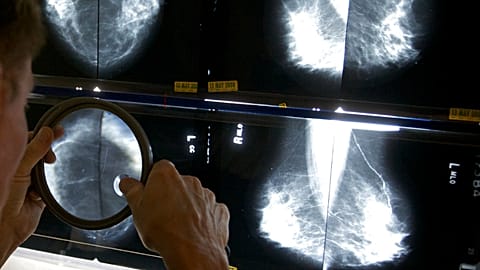Researchers have found that a blood test alone to detect prostate cancer can be unreliable, leading to overdiagnosis and missing some cancers.
Using magnetic resonance imaging (MRI) to screen for prostate cancer in addition to a blood test can improve diagnosis, a new study has shown.
The study, published in the BMJ Oncology journal, was the first to look at the use of an MRI scan alongside a prostate-specific antigen (PSA) test.
This blood test measures the amount of PSA, a protein made by the prostate, in the blood as it can be higher for men that have prostate cancer. A raised PSA level (3 ng/ml or more) can be a sign of prostate cancer.
But, according to the UK’s National Health Service (NHS), the test can be unreliable: three in four men with a raised level will not have cancer while one in seven men with prostate cancer could have a normal PSA result.
The new study by University College London (UCL) and King’s College London researchers published on Tuesday found that 15 of the 29 participants that were found to have serious prostate cancer had a low PSA score, meaning they would not have been referred for further testing based on the blood test alone.
“The thought that half the men with clinically significant cancer had a PSA less than 3 ng/ml and would have been reassured that they didn’t have cancer by a PSA test alone is a sobering one and reiterates the need to consider a new approach to prostate cancer screening,” said Caroline Moore, a urologist from UCL’s Surgical and Interventional Science department in a statement.
“Our results give an early indication that MRI could offer a more reliable method of detecting potentially serious cancers early, with the added benefit that less than one per cent of participants were ‘over-diagnosed’ with low-risk disease,” she added.
Around 16 per cent of the more than 300 participants, who were men aged 50 to 75, had an MRI scan that indicated there might be cancer, and most of them had a PSA test lower than 3 ng/ml.
Previous research has shown that using an MRI could reduce over-diagnosis and help nearly one in four men to avoid a biopsy, which is an invasive procedure.
Future national screening on the horizon
There is currently no national screening programme for prostate cancer in the United Kingdom but men over the age of 50 can have the PSA test if they have symptoms or are concerned about prostate cancer.
Many men with early prostate cancer will not have symptoms, but those more at risk include black men, men over 50 and those with a family history of prostate cancer, according to Prostate Cancer UK.
The charity added that changes to urination can be a sign of prostate cancer, but is more frequently a sign of an enlarged prostate, which is a benign condition.
Some 47,000 men are diagnosed with prostate cancer in the UK and around 12,000 die per year in the country, according to Cancer Research UK.
The study authors said that black men were five times less likely to sign up for the trial than white men despite being at a higher risk for prostate cancer and that any national screening programme will need to encourage black men to get tested.
“The UK prostate cancer mortality rate is twice as high as in countries like the US or Spain because our levels of testing are much lower than other countries,” said Mark Emberton, senior author of the study from the UCL Cancer Institute.
“Given how treatable prostate cancer is when caught early, I’m confident that a national screening programme will reduce the UK’s prostate cancer mortality rate significantly,” he said.
“There is a lot of work to be done to get us to that point, but I believe this will be possible within the next five to ten years”.


















